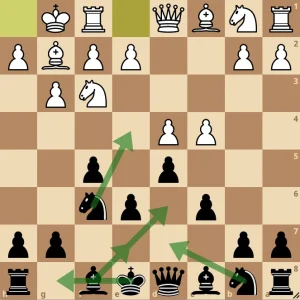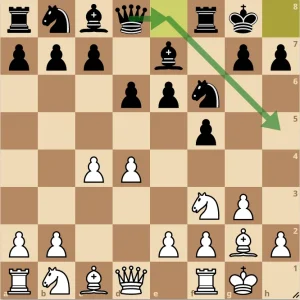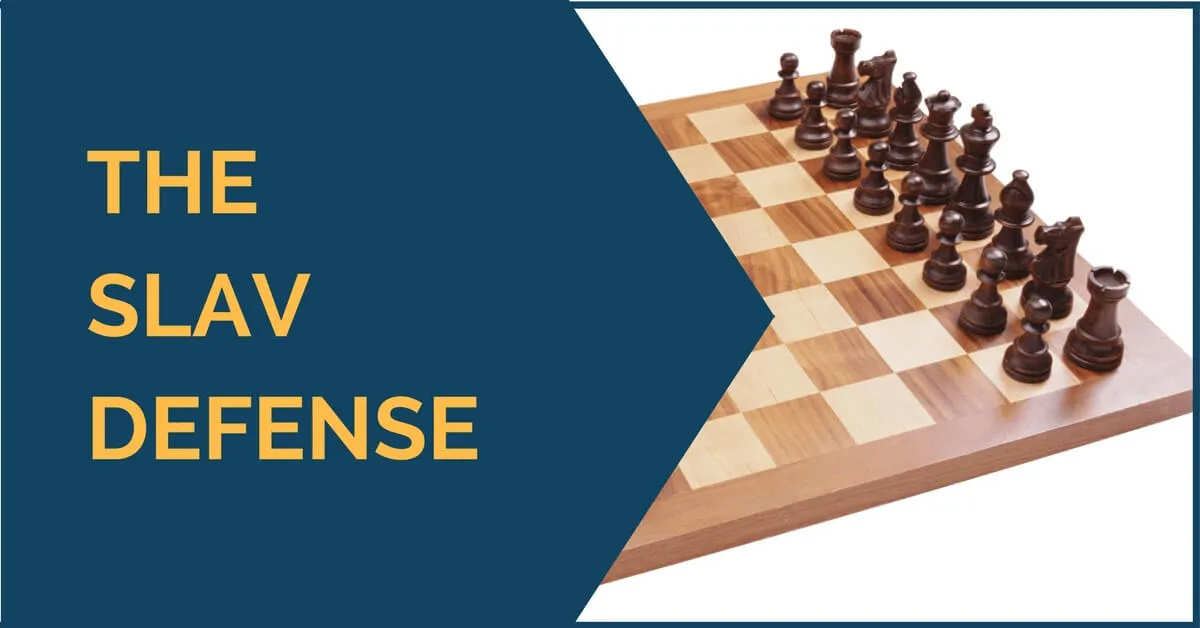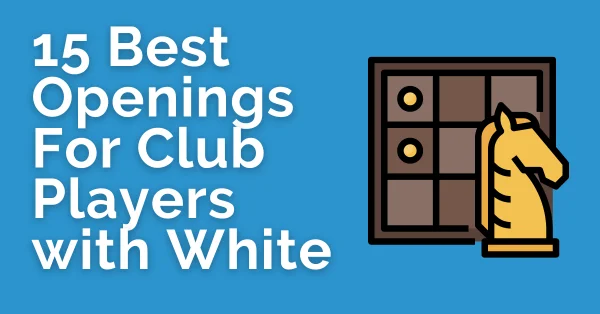Dutch Defense: The Complete Guide
Dutch Defense is characterized by the moves 1.d4 f5 when Black is using the flank pawn to control the center. It breaks the symmetry and gains space on the kingside. Later, this can provide good attacking chances against the White king. Such an approach usually leads to double-edged positions and is good for playing for a win. That is why many modern grandmasters opt for it when seeking a combative play.
In the Dutch Defense, Black can develop their pieces in different ways. Usually, they choose from three main systems.
Dutch Defense – The Leningrad Variation
The Leningrad Variation is characterized by the fianchetto of the dark-squared bishop. The mainline starts with the moves 1. d4 f5 2. c4 Nf6 3. Nf3 g6 4. g3 Bg7 5. Bg2 d6 6. O-O O-O 7. Nc3, when the following position appears:

Black’s setup is similar to the King’s Indian Defense.
The only difference is that the pawn is on f5 instead of f7. This little nuance makes a big impact on the future play of both sides, although the arising position still will have much in common with the King’s Indian Defense. The Leningrad has been the most popular line of the Dutch among modern grandmasters.
Dutch Defense – The Stonewall System
The Stonewall System is characterized by a solid pawn chain f5-e6-d5-c6 in the center. For example, it can be reached after 1. d4 f5 2. c4 Nf6 3. Nf3 e6 4. g3 d5 5. Bg2 c6 6. O-O:

Black is controlling light squares in the center with pawns and dark squares with pieces. Later, it is possible to play for an attack against White’s king.
Let’s note that Black can build the pawn chain via different move orders. The Stonewall used to have a bad reputation, but recent wins of Magnus Carlsen in this system proved that it is absolutely playable even at the highest level.
Dutch Defense – The Ilyin-Zhenevsky Variation
This is the old-fashioned way of playing this opening.
In this variation, Black humbly puts their central pawns to e6 and d6 and quickly finishes the kingside’s development.
For example, one of the main positions of this variation can be reached after 1. d4 f5 2. c4 Nf6 3. Nf3 e6 4. g3 d6 5. Bg2 Be7 6. O-O O-O:

Now Black can try to transfer the queen from d8 to h5 to start an attack. Another possible plan is to play for the e6-e5 pawn push in the center.
The Dutch Defense – Ilyin-Zhenevsky Variation is the least popular line among the Dutch systems nowadays. Usually, the Stonewall and the Leningrad promise more perspectives for Black. But at the same, it makes this line more surprising and gives more chances to catch your opponent off guard.
Now, when you know what the Dutch Defense is, let’s see in what situations you could play it in your next game. Here are 10 reasons to choose the Dutch.
1. You want to play for a win
The main openings after 1.d4 don’t usually offer Black good winning chances. The arising positions are either symmetrical or too solid for White. The Dutch Defense is a good way to spice the game up and try to play for a win.
2. You like double-edged positions
The Dutch Defense is a strategically interesting opening. The plans of the sides are so different that it often leads to complicated positions. Many people enjoy playing games like that. It is never boring and makes room for creativity.
3. You want to take your opponent out of the comfort zone
If your opponent is excelling at playing solid classical openings, it is usually a good idea to take them into complications. The Dutch Defense is one of the openings that could help in such a situation. Your opponent most likely will have less experience in the arising positions and you will have chances to take over the initiative.
4. You want to avoid mainstream theory
Many players don’t like competing in the knowledge of theory. They want to play pure chess. It is hard to achieve in the modern world when almost every opening is analyzed to a great depth. But you still can choose the openings that are less explored than the main lines. The Dutch Defense is one of such options. If your opponent is fond of memorizing computer lines against most common openings, take them into the Dutch Defense territory.
Want to learn more about this topic? Make sure to read more on 5 Reasons to Play the Dutch Defense.
5. Your favorite players employ the Dutch Defense
One of the most popular ways of building an opening repertoire is to copy one from strong players of your style. This is one of the reasons why, for example, the Najdorf Variation is so popular: many people just copied Fischer and Kasparov!
Different variations of the Dutch Defense have often been used by such strong players as Magnus Carlsen, Hikaru Nakamura, Ian Nepomniachtchi, Maxim Vachier-Lagrave, Gata Kamsky, Anton David Guijarro, Vassily Ivanchuk, Erwin L’Ami, and many others. If you like the way some of these players approach the game, you can learn the Dutch Defense from their games.
6. You like the flexibility of Black’s position
The Dutch Defense is characterized by the …f7-f5 pawn push, but it not necessarily has to be played on the first move. Black can start with 1…d6, 1…g6, 1…d5, 1…e6, or even 1…c6 to later switch to the Dutch too. This way you can outsmart your opponent into a more favorable version of the Leningrad or the Stonewall. Keep in mind, that in such cases your opponent can play 2.e4 and turn the game into 1.e4 openings. In general, the more setups you know, the more possibilities you get.
7. Your opponent does not do well against Dutch Defense
Sometimes, you prepare for a game, look up your opponent in the database, and see they do poorly against certain lines.
You can try to exploit their weakness by playing one of these openings. This approach is a bit risky; your opponent might have fixed their repertoire already. But if they don’t expect this opening from you, it increases your chances of success.
8. You like placing pieces behind the pawns
It was the great French master Francois-Andre Philidor, who was the first to realize the true value of pawns and the impact they make on the game. Back then it was revolutionary but nowadays everyone seems to be aware of the importance of the pawn structures.
The Dutch Defense goes along with Philidor’s principles. He always tried to put his pieces behind pawns. This way the pieces support the future pawn expansion and stay away from the danger behind such a shield.
Many opening systems are based on this idea: the Hedgehog, the Maroczy-Bind, the Sicilian, the Ruy Lopez, etc. This is how it usually works in the Dutch too. If you look at the diagrams above, you will notice it. Many people play only systems where pieces are placed behind the pawns. If you are one of them, you may enjoy playing the Dutch Defense too.
9. You aim for a quick attack
In some openings, it is hard to even imagine how Black can checkmate White’s king. You should create certain conditions to make an attack possible. In the Dutch Defense, it is rather easy to achieve. Black can bring the queen to an attacking square on h5; the knight’s important outpost on e4 is near White’s king; Black has more space on the kingside and can even start a pawn storm.
10. You like closed positions
Many players prefer outplaying their opponents in long strategic battles. They close the position and start smart maneuvering and regrouping.
The Stonewall – Dutch Defense sounds like a good opening choice for such players. No wonder, Magnus Carlsen successfully used it against strong opponents. He beat with it Fabiano Caruana, Vishy Anand, Anish Giri, and many other grandmasters.
https://thechessworld.com/store/product/win-with-dutch-defense-with-gm-miloje-ratkovic/










Comments: